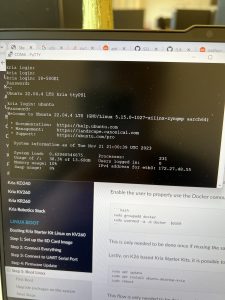This week we had already wrapped up our unit testing and final presentations, and mainly focussed on wrapping up the deliverables for the project.
We completed the following:
- Talked to Prof. Gloria about the ideal structure of user testing and what we aim to find from the testing:
- The only goal of user testing is to try and break the system.
- As a result, other ECE students that could devise edge cases were used for UI testing.
- Multi client involved the sequential setting of flags, and a tertiary system would keep reading them asynchronously .
- We needed to test timing errors so we made a timing diagram and blocked the testing into different segments.
- Details covered in anirudh status report.
- Wrapped up the project poster and most of the final report.
Next week we’ll just wrap up the final report and submit the remaining deliverables after presentation. Given that we are almost completely done with this and are ready for the demo, we are well ahead of schedule.


